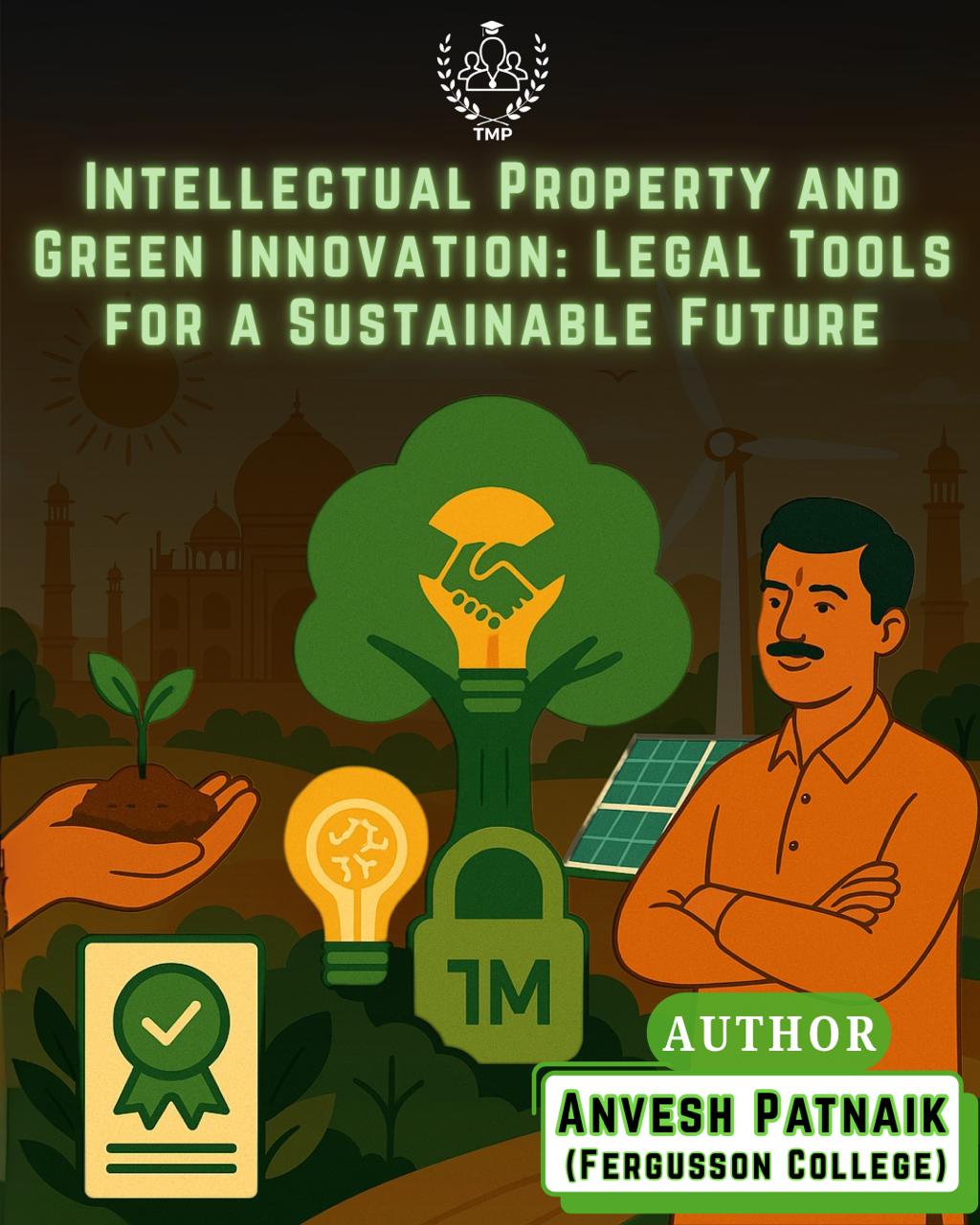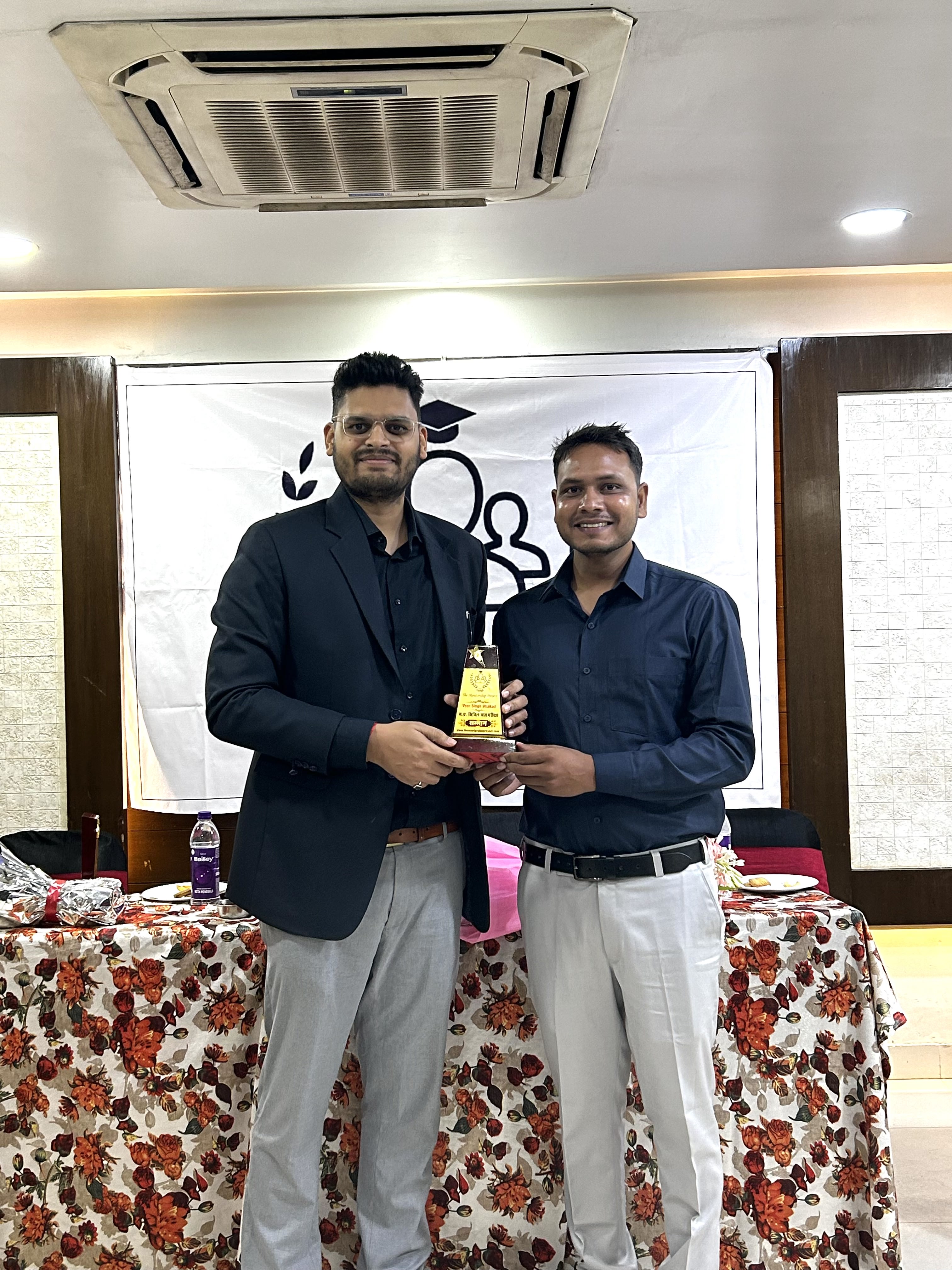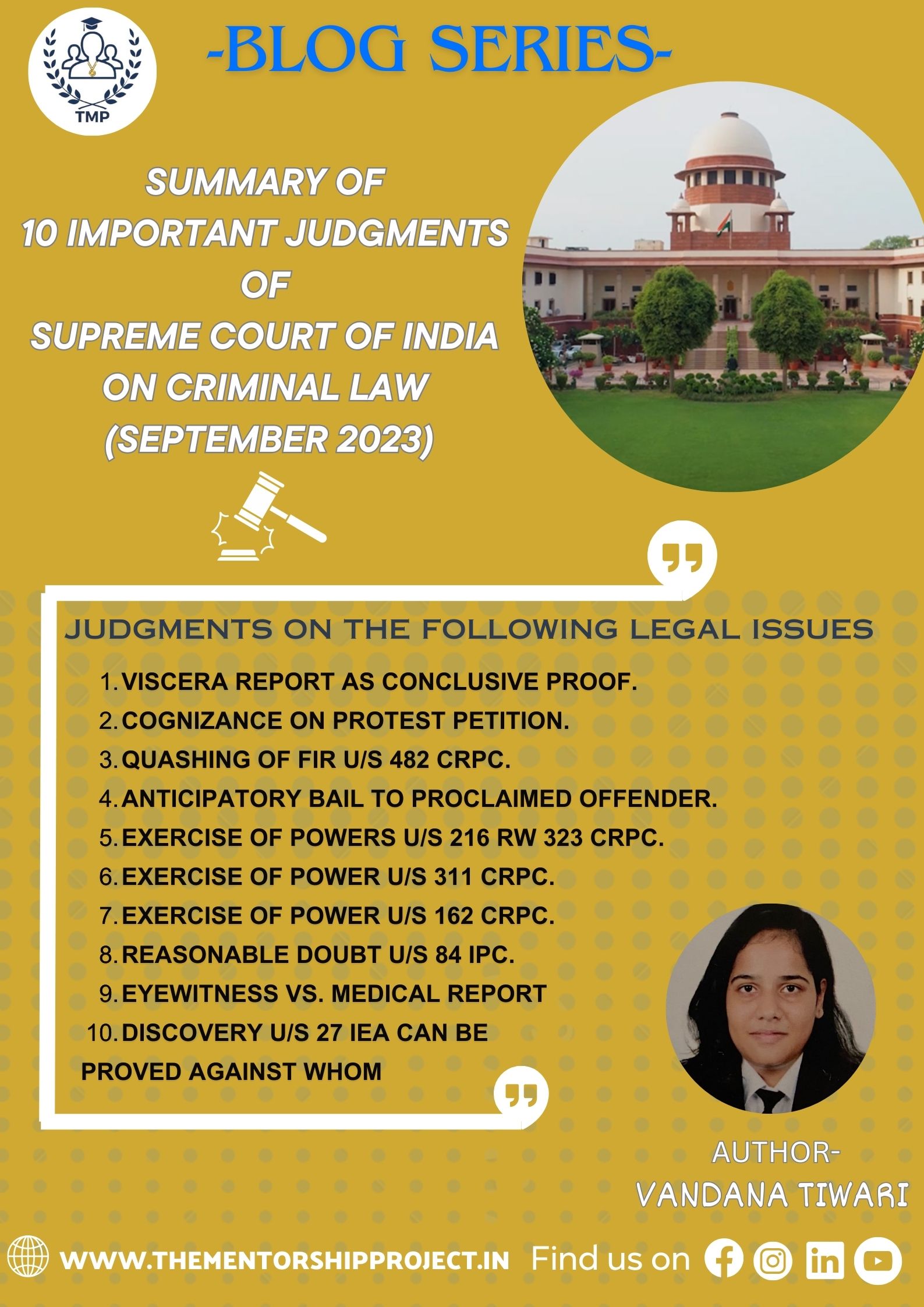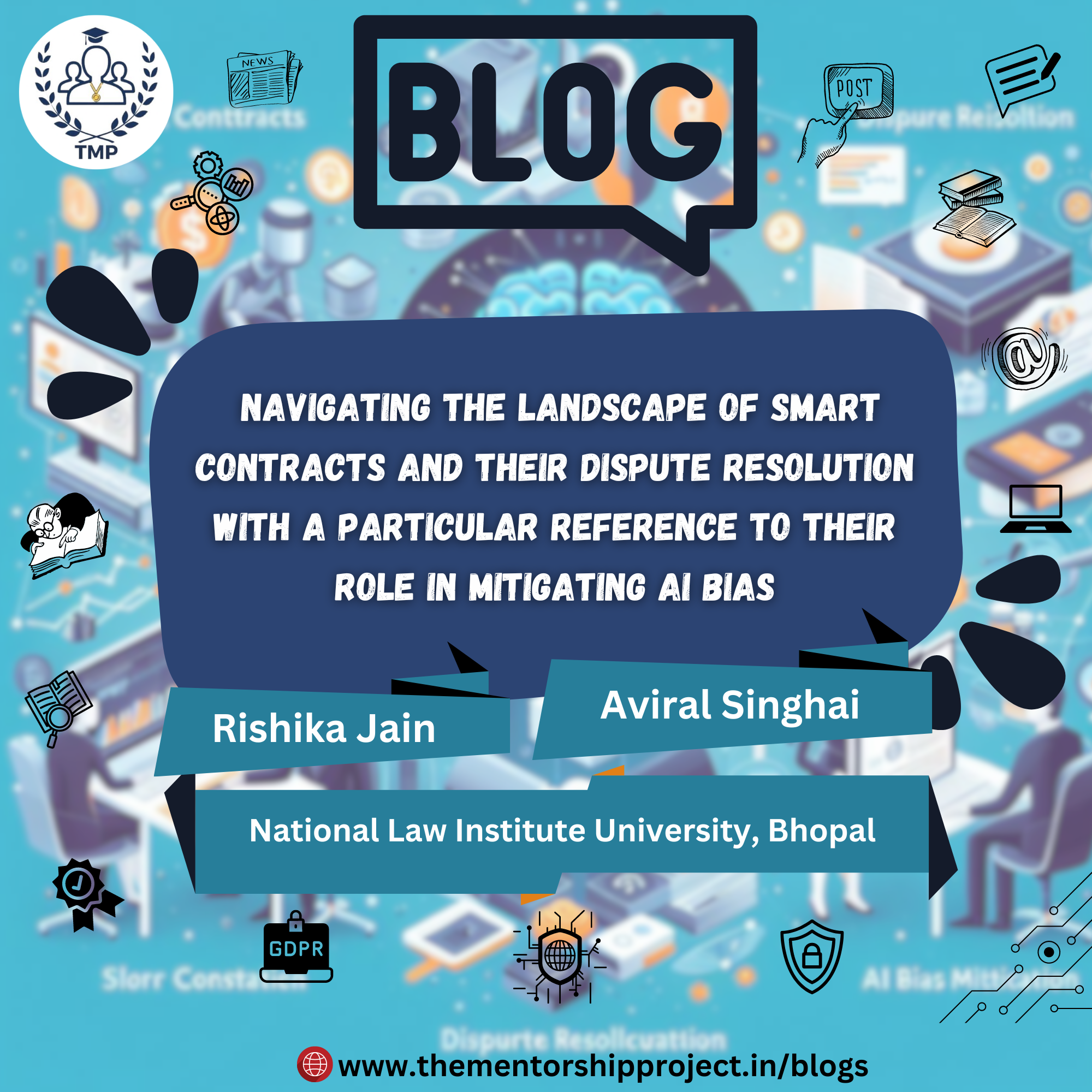July 30 , 2025
Intellectual Property and Green Innovation: Legal Tools for a Sustainable future
Introduction
The symbiotic relationship between intellectual property (IP) law and green innovation is majorly important as the world confronts environmental challenges. This relationship is structured by numerous legal guidelines, frameworks, and case laws that influence how green innovations are protected and promoted in the context of sustainability.
Green Trademarks, also known as environment-friendly marks, are rapidly increasing in popularity during recent years. They are used for promoting the preservation of environment and sustainable development. These marks are used to demoralize any form of activity that might lead to pollution, deforestation, or any type damage to the environment. ‘People and Planet Positive’ by the popular furniture company “IKEA” is one of the examples of eco-friendly practices that focuses on inculcating solar energy and regenerative environmental activities in their daily workings. Recently, various countries have started producing eco-friendly products for the least amount of pollution possible by their brands. Green trademarks are eligible for registration under trademark as they can be graphically represented and have goods and services which can be distinguished from other registered marks. But Green marks cannot be recognised as a Trademark in India, as they are a descriptive nature to the words used in a product; therefore, they can be registered under a certification mark in India. Green marks used by companies provide a different form of advertising and a promise to provide 100% biodegradable and organic products which are free from any harmful agents used in the process of making the products.
While on the other hand, Greenwashing can be defined as when a company is providing false and baseless information about their products being environment friendly. It is usually done with an aim of deceiving the consumers by promoting fallacious information about the products.
Currently, India has two popular Green Marks, which are Godrej and Nestle. Godrej is read as “Good and Green” which shows their commitment towards making India pollution free and greener. Nestle on the other hand in, 2018, promised that their products will be 100% recyclable and reusable by 2025. Brazil Unilever and Walmart have built sustainable houses within the stores made from recycled products. Though this is one of the major steps taken by them however, the countries have not recognised green marks.
In simple words, a trademark which can be emphasized on being ecologically ethical and sustainable can be termed as a green trademark. Godrej has obtained registration for the tagline of 'Good & Green' with the intention to make 'Good & Green products' to fulfil their social responsibility of making our future a greener India. Similarly, brands such as ‘Biotique’ and ‘Mamaearth’ have eco-friendly insinuating names and therefore are also covered under green trademarks.
The origin of green trademarks is the result of endless human exploitation to our ecosystem. Owing to climate changes, consumers are becoming more environmentally conscious and hence, businesses are exploring new ways to show their concerns to environment. To convince those minimalistic and environmentally sensitized consumers, businesses are committing to follow genuine eco-friendly practices. Green marketing is being embraced by brands in several ways including adopting trademarks/ taglines with terms like "sustainable", "eco-friendly", etc., for their products or using images of mountains, beaches, oceans, and other natural phenomenon as their backdrop or merely putting green colour in the logos.
In India, Green Marks are recognised as certification marks, namely, ‘Ecomark’ which are issued by the Bureau of Indian Standards. Under Ecomark scheme, the products which are included are soap, detergent, food items, electronic goods, plastic products, cosmetics, and any other packaged item and ‘GreenPro’ issues by the Confederation of Indian Industry, the mark indicates that the product is ecologically ethical.[1]
Certification symbols serve as trademarks utilized by authorized individuals to signify that their products or services meet the specified criteria of the certifying organization. Common instances include the HALMARK, for jewellery and FSSAI for food items those are recognizable in our lives. Such symbols usually belong to trade alliances or similar centralized business entities. The entity holding the symbol establishes guidelines for validation to ensure that products carrying the symbol adhere, to quality standards. The person who owns the trademark cannot use it themselves; but must allow others to use it if their products or services meet the required standards, for certification marks licensing.
Statutory and non-statutory certification markings are used for different items in India. For example, a green dot represents vegetarian food, a brown dot indicates non-vegetarian food, and toxicity labels are used for pesticides.
Statutory marks, such as the toxicity label on pesticides, the green dot on vegetarian food, and the brown dot on non-vegetarian food, are required markings that attest to a certain kind of goods.
The government encourages the use of non-statutory markings to certify certain items. For instance, the Ayush mark for herbal items, the Silk mark, etc. It is not necessary to put these marks but acts as mark of goodwill and trust.
Section 2 (1) (e) of the Trademarks Act defines that a certification mark is a mark capable of distinguishing the goods or services in connection with which it is used in the course of trade which are certified by the proprietor of the mark in respect of origin, material, mode of manufacture of goods or performance of services, quality, accuracy or other characteristics from goods or services not so certified.
Green Marks play an important role in environment protection and has become the talk of the town in Intellectual Property World. Though the use of Green Marks cannot be recognised as a trademark in India, due to the descriptive nature of the words used for the products, it can be registered as certification mark, as it denotes the quality of the goods through which the consumers rely on the company and are convinced to use the products which are ecologically efficient.[2]
WIPO GREEN
WIPO Green Is an initiative established by the World Intellectual Property Organization (WIPO) in 2013, aimed at facilitating the exchange of environmentally friendly technologies. By bringing together technology providers and those looking for sustainable solutions, it aids in international efforts to combat climate change. The platform serves as a marketplace for sharing green technologies, promoting innovation, and enhancing the diffusion of eco-friendly technologies across various sectors.
From prototypes to products that are ready for the market, WIPO GREEN offers a comprehensive database of innovations at different stages of development. Users can use this database to search for and access sustainable innovations that are for sale, collaboration, or licensing. In order to connect with possible partners who may meet these standards, users can also submit their technical demands.
A network of more than 146 partner organizations, including corporations, academic institutions, government agencies, and intergovernmental organizations, are part of the program.
WIPO unveiled the Green Technology Book in November 2022, showcasing creative approaches to adapting to climate change. The purpose of this article is to increase knowledge of current technologies and how they could affect sustainability initiatives.
Companies can align their activities with the Sustainable Development Goals (SDGs) of the UN, especially those associated with sustainability and climate action, by participating part in WIPO GREEN.
Additionally, the 2019 WIPO study describes patterns in green energy patent applications submitted through the PCT. According to the study, PCT green energy technologies fall into two main categories: Efficient Energy Use/Consumption (such as energy-efficient lighting) and Alternative Energy Production (such as solar photovoltaic, wind). It points out that although green patent applications have generally decreased since 2013, this dip is mainly due to an 18?cline in alternative energy technologies. Applications for efficiency-boosting technology, on the other hand, rose by 9%.
China has become a leader in patenting green transportation innovations, while the top five countries filing green patent applications in 2019 were the United States, Germany, Japan, and the Republic of Korea. Together, these countries accounted for nearly 76% of all applications.
WIPO Green-China has achieved significant improvements in several projects, such as the WIPO GREEN City Acceleration Project in Beijing. Beijing hosted the 2024 WIPO GREEN China City Acceleration Beijing Event. The World Intellectual Property Organization (WIPO) Office in China and the Beijing Municipal Intellectual Property Office (BMIPO) co-hosted the event, which featured its theme "Promoting green innovation in support of the UN SDGs." The BlueTech Clean Air Alliance (BCAA) assisted in organizing the event. Three successful partnerships have already been put into place, and by the end of 2023, this pilot initiative helped technology searchers and suppliers sign six memorandums of cooperation.
Fast-tracking Green Patents - Global Initiatives
In order to promote and facilitate the emergence of green patents and, consequently, innovation in environmental technology, many governments have revised their patent examination processes within national patent offices over the past few years.
During the December 2009 Copenhagen Summit, the topic of intellectual property in clean energy technologies also gained significant attention. The summit focused on frameworks for addressing climate change and reducing carbon emissions by both developed and developing countries. It included the 15th Conference of the Parties (COP 15) and the 5th Meeting of the Parties (MOP 5) to the Kyoto Protocol. Global environmental policy was significantly shaped by this event.
The UK launched the first green patent "fast-track" scheme in May 2009 to expedite the review of green technology prior to this summit. In order align with the Copenhagen event, the USPTO then established its Green Technology Pilot Program on December 8, 2009. The goal of this program was to speed the review of green technology patent applications. Australia (September 2009), South Korea (October 2009), Japan (November 2009), Israel (December 2009), Canada (March 2011), Brazil (April 2012), and China (August 2012) were among the nations that quickly adopted their own fast-track patent schemes. The goal of these initiatives was to hasten the creation and adoption of sustainable technology on a global scale.
The International Centre for Trade and Sustainable Development (ICTSD) published an empirical study by Antoine Dechezleprêtre of the London School of Economics and Political Science that offers a thorough analysis of the various green patent fast-track initiatives put in place by various nations. Climate change-related technology, especially renewable energy technologies like wind power and carbon capture and storage, account for the majority of patents under fast-tracking programs.
In the same time period, fast-tracked patents received over twice as many citations compared to non-fast-tracked patents, suggesting that these initiatives have sped up the short-term spread of technological knowledge in green technology.
For a single patent, a sizable percentage of applicants (72%) asked for rapid assessment. Smaller businesses with quickly increasing assets were more likely to be fast-track users, indicating that these initiatives are especially helpful to new businesses in the green technology sector and support sustainable development.
Conclusion
Intellectual Property plays a major role in development of Green Innovations and establishing such innovations in the world of IP. It incentivizes R&D as well as promotes collaboration while catering to the transfer of global technologies. Intellectual Property laws have become major tools towards the fight for climate change. As we are looking forward for the future, there should be a balanced approach that mixes collaboration and protection and makes sure that access towards sustainable and eco-friendly tech reach the right communities that are essential for sustenance.
In conclusion, as nations, companies, and individuals seek to mitigate the effects of climate change, intellectual property will continue to serve as both a driver of innovation and a tool for equitable access to green technologies. Only through a comprehensive and collaborative approach can we hope to unlock the full potential of IP in advancing global sustainability.
(Authored by Anvesh Patnaik, student at Furgusson college, Pune, Views Expressed are personal)
[1] Tanya Saraswat, Validity Of Trademarks For Green Labels, MONDAQ (Jun. 09, 2023), https://www.mondaq.com/india/trademark/1327806/validity-of-trademarks-for-green-labels
[2] Samuel Adomako, Intellectual property rights protection and sustainable innovation performance: The mediating role of technology spillover, WILEY ONLINE LIBRARY (Oct. 02, 2024), https://onlinelibrary.wiley.com/doi/full/10.1002/sd.3220









